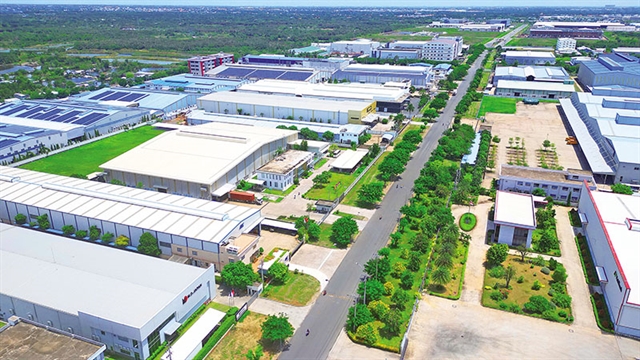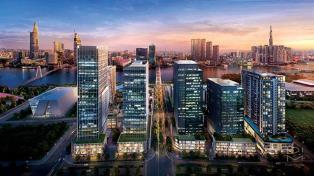In the era of Industry 4.0 and deep global integration, digital and green transformation are not short-term trends but core strategies, enabling enterprises to improve competitiveness, expand markets and ensure long-term development, according to policymakers and industry experts.

HÀ NỘI — In the era of Industry 4.0 and deep global integration, digital and green transformation are not short-term trends but core strategies, enabling enterprises to improve competitiveness, expand markets and ensure long-term development, according to policymakers and industry experts.
Vice President of the Việt Nam Chamber of Commerce and Industry (VCCI) Hoàng Quang Phòng said emissions reduction, operational optimisation and production quality upgrades are no longer optional — they are prerequisites for staying competitive in the global market.
A report by the Ministry of Industry and Trade says that applying digital technologies in combination with smart energy management systems can help enterprises reduce operating costs by 10–15 per cent, increase productivity by 20 per cent, and cut CO2 emissions by 5–8 per cent annually.
Another recent study by McKinsey & Company also estimates that digital transformation in manufacturing could boost labour productivity by about 30 per cent and reduce supply chain costs by 15–20 per cent. This shows that dual transformation is not just a technological solution, but a decisive driver for sustainable growth.
Nguyễn Hồng Hiển, director of the Department of Science, Technology, Innovation and Digital Transformation under the Central Policy and Strategy Committee, confirmed that growth would only have real value when built on a sustainable foundation — and the key to achieving this lies in dual transformation.
Digital transformation would help businesses scale up, cut costs and improve customer experience, while green transformation would deliver energy savings, emission reduction and compliance with increasingly stringent ESG standards in international markets.
However, the process exposes multiple challenges.
From the perspective of exporters, Vice President and Secretary-General of the Việt Nam Textile and Apparel Association Trương Văn Cẩm said that dual transformation was now mandatory for exporters, as major markets like the US, EU and Japan imposed strict requirements on traceability, environmental performance and carbon emissions. Yet many firms still struggled with technical standards, technology manpower, limited funding support and slow tax refund processing, which affected cash flow.
For small and medium-sized enterprises (SMEs), the barriers are even greater. Vice President of the Hà Nội SME Association Mạc Quốc Anh noted that many SMEs lacked tech talent, faced financial constraints and did not have systems to measure efficiency, leading to reluctance to invest. Strategic awareness and an innovation-oriented culture remained major obstacles.
Momentum
At the policy level, Resolutions 57-NQ/TW and 68-NQ/TW have clearly identified innovation, digital and green transformation as pillars of growth, steering Việt Nam toward becoming a high-income developed nation by 2045. But experts warn that the gap between policy intent and real-world implementation remains substantial.
Phạm Hồng Quất, director of the Agency for Innovation and Technology Enterprises under the Ministry of Science and Technology, emphasised that dual transformation is not merely about adopting technology — it is about transforming business models.
The decisive factor lies in the vision and capacity of leadership. “Technology is only a tool; leadership mindset is the true driver. Without a clear purpose and innovation mindset, digital or green transformation risks becoming a costly formality,” he said.
From an industry perspective, several enterprises have demonstrated effective dual transformation models. Vietnam Cement Corporation has used waste heat in production, installed rooftop solar power and incinerated industrial waste at high temperatures to reduce emissions, while researching dredged sludge as a substitute material. However, stronger incentives are still needed to scale up green production.
On the technological front, Mobifone Deputy General Director Lieutenant Colonel Nguyễn Đình Tuấn said the company was promoting AI applications in management, energy control and productivity improvement, aiming to make AI accessible to SMEs via digital infrastructure. This, he noted, would help bridge the resource gap between large corporations and smaller firms.
Nguyễn Đoàn Kết, vice chair of the Board and Deputy General Director of Rạng Đông Light Source and Vacuum Flask JSC, proposed building open innovation models that connect institutes, universities and businesses, as well as technology trading platforms enabling SMEs to access affordable solutions. —VNS





